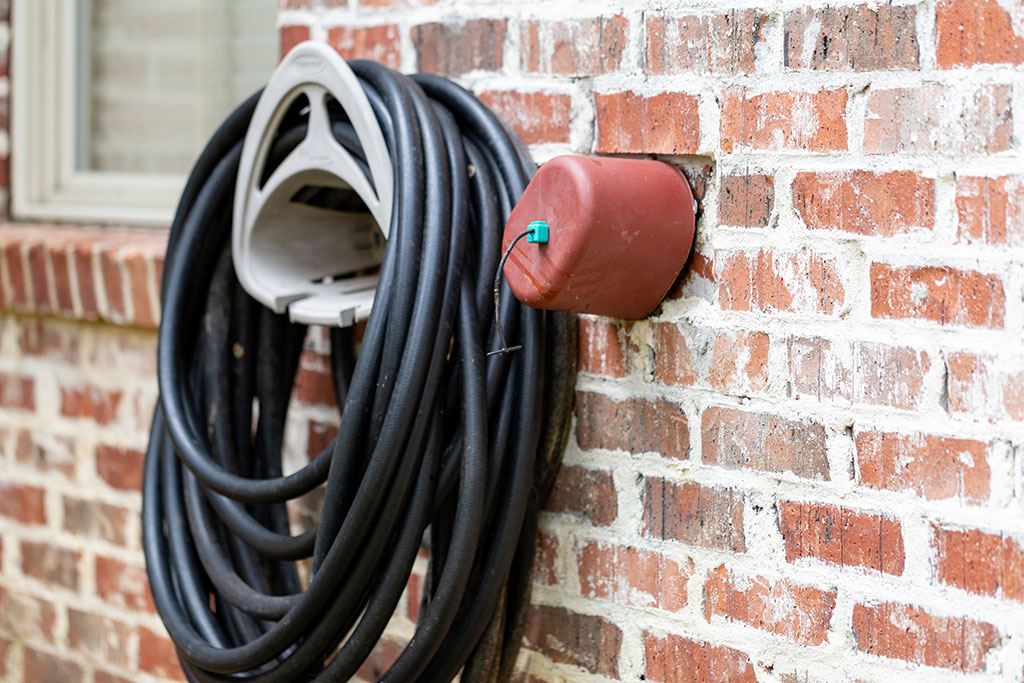How to Prepare Your Home for Winter
It’s that time of year again, when heavy boots take the place of sandals and savoring hot mugs of cocoa becomes routine.
But closets and cuisine aren’t the only areas to make changes in. In the face of looming threats such as snowstorms and ice, the interior and exterior of your home need proactive winterizing to properly prime them for the months ahead. Use this list of essential tasks to help you transition seamlessly from the comforts of fall to the chill of winter.
Begin outside
Clean your gutters
Clogged gutters can become cold-weather nightmares that cause damage to your foundation and roof. Before the temperatures dip, thoroughly clean your gutters and downspouts, removing any debris that is obstructing drainage. Begin near the downspout, carefully climbing a ladder and then using your hands or a gutter scoop to extract material collected in that area; make sure to have a bucket nearby to deposit it in and wear goggles and gloves to protect yourself. Then move to the opposite end and use a hose to flush the entire gutter with a strong stream of water, working your way back to the downspout. Afterward, check that all obstructions have been cleared.
To minimize future blockages and maintenance, consider adding gutter guards, which are typically mesh screens designed to cover your gutters and prevent leaves and other debris from compiling in the first place. You’ll still want to check them occasionally, though, to ensure that there are no issues.

Store your patio or deck items
Harsh elements and cold temps can compromise your grill and outdoor furniture. Start by giving them all a thorough cleaning—your future self will thank you once hotter weather returns and you’re jonesing to throw a barbecue or relax outside. Then place fitted covers on each item or, even better, move them to a covered space like your shed or garage; just make sure to first take out any shovels, scrapers, snow brushes, and deicing agents before they get buried. Also, if you have a gas grill, close the valve on the propane tank, disconnect it from the grill, and store it upright in an outdoor location at least ten feet from your home and anything flammable.
Take your plants in
If you haven’t already, bring your potted plants indoors, ideally before temperatures consistently fall below 45 degrees. Inspect and treat them for any pests first to prevent indoor infestations, and then place them near south-facing windows to replicate their natural sunlight requirements; also take care to adjust their watering schedule as needed. However, keep in mind that not every plant requires being brought inside for winter. Find out your plants’ particular needs to see whether they would be able to withstand the lower temperatures. You can use an app like Pl@ntNet to identify their species and get all their essential care information.

Move inside
Seal doors and windows
Drafty windows and doors can siphon warmth (and money) from your house thanks to windy weather, which may cause more cold air to seep in. Applying caulk or weatherstripping to windows, doors, and other openings to seal leaks can help you save on heating costs, produce more comfortable, temperate surroundings, and even prevent mold growth. Still feel like your home’s on the cold side? It could be your attic—improper insulation up there can lead to 20 to 30 percent heat loss. Consider reaching out to an insulation service to assess this area and get it properly protected before winter.

Have your HVAC serviced
On a bitterly cold winter night, a broken furnace is nothing short of disastrous. If you’ve yet to do so, schedule a professional furnace inspection to have a qualified technician do a complete cleaning and tune-up of your system and make sure your furnace is running as it should. They can catch little problems, like malfunctioning thermostats or clogged burners, before they become big issues, helping you save money and hassle over time. Also be on the lookout for any strange odors throughout your house or visible corrosion on burners or wires; these are issues that require immediate servicing.
Protect your pipes
Freezing temperatures can cause pipes to burst, resulting in potential water damage. One way to prevent this is to purchase precut foam pipe sleeves to insulate any exposed pipes in your crawl space, attic, and garage. Installing these sleeves is simple: just slide them over the pipes and duct tape the ends closed.

In addition, weatherize your hose bibs, or outdoor faucets, by turning off their water supply via the shutoff valve, which can usually be found in the garage or basement. Then separate the attached hoses and empty any water from the hose bibs themselves; for added protection, you could also put faucet covers on the bibs. These easy steps can prevent a pipe from bursting and possibly flooding should the temperatures drop drastically.
By taking precautionary steps to safeguard your home against winter risks, you can turn it into a comfortable retreat filled with warmth and comfort. So after finishing your prewinter checklist, light some candles, toss on a warm sweater, and rest easy knowing you’re well prepared for the season ahead.


















